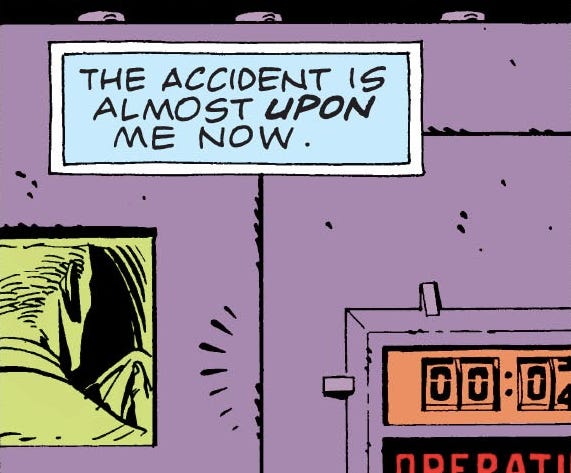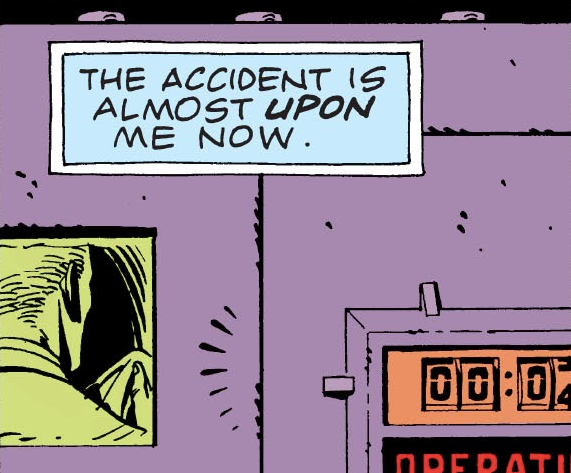As The Invasion of Ukraine Goes On, Pressure To Escalate Goes Up
The Biden administration is, correctly, against a no-fly zone. The problem will be keeping that politically tenable.



Edited by Sam Thielman
RUSSIA APPEARS to have bombed a maternity hospital in Mariupol today. Volodomyr Zelenskyy responded with an understandable appeal aimed at Washington and Brussels: "Close the sky right now! Stop the killings! You have power but you seem to be losing humanity."
The Biden administration really doesn't want to do this. They say so publicly and thus far without equivocation. Conversations I've had over the last few days indicate the Pentagon considers a no-fly zone to be an irresponsible idea. "Simply a nonstarter," one Pentagon official told me.
How long that position remains politically tenable is a crucial unanswered question. The longer the war persists, the greater pressures will intensify for the U.S. to break a deadlock while suffering Ukrainians, like the suffering Syrians before them, plead for America to close the sky.
I HAVE WRITTEN too many why-a-no-fly-zone-is-a-bad-idea pieces to have the energy to do it again here. Here's the crude, exhausted-reporter version.
It is one thing, as a matter of tactical proficiency, to ground a weak air force. Against Russia, you unavoidably court World War III. Imagine being one of those young F-16 pilots who will have to make split-second decisions between superpower conflict and watching civilians below you die. Do you fire when you see the Russian jet launch a missile on targets below? When it fires on you? What happens when it just flies close to you? What happens when several Russian warplanes in your airspace close formation? And so on, during every single combat air patrol (CAP), CAPs that you will have to keep in the skies relentlessly, from airfields of NATO countries, for as long as the No-Fly Zone lasts. The strategist Lawrence Freedman writes that the Kremlin will view NATO adoption of such a measure as "tantamount to a declaration of war."
It's also possible that the superpower conflict starts at the mere announcement of measures that Vladimir Putin could read as NATOization of the war. Even getting within field-goal range of such an announcement runs that inescapable risk. We saw a glimpse of that this week, after Secretary of State Tony Blinken gave a surprising Sunday "green light" for Poland to send MiG fighter jets to Ukraine. Poland's interpretation of this remark—or perhaps its second thoughts about being the NATO country to Leeroy Jenkins itself into the Russians—led it to offer the U.S. control of sending its MiG fleet to the Ukrainians, exactly what the administration does not want.
It would be reasonable for the Russian general staff to read such a thing as the U.S. and NATO unambiguously entering the war as combatants. John Kirby, the Pentagon spokesman, described the proposal as not a "tenable" idea. "The prospect of fighter jets 'at the disposal of the Government of the United States of America' departing from a U.S./NATO base in Germany to fly into airspace that is contested with Russia over Ukraine raises serious concerns for the entire NATO alliance," Kirby said in a late Tuesday afternoon statement. He led off his briefing the next day emphasizing that the U.S. would not be helping Ukraine if "steps we take and decisions we make" are "read as escalatory." Yet Kirby demurred when asked if he was actively discouraging Poland from making any aircraft transfer on its own.
All that feels like a preview of the escalatory pressures to come. Not only from Zelenskyy, or from NATO allies, but at home. Sen. Ben Sasse (R-Neb.), a frivolous person who thinks he's a substantial person, said on Tuesday that Biden should accept the MiGs from Poland and give them to Ukraine, which "doesn’t have time for paperwork." This is the path to the sky getting bright at 10:30 p.m.
Biden ruling out a no-fly zone will perversely create countervailing political pressure for one the longer the occupation persists. The longer it persists, the worse it becomes. Unforgivable crimes like the Mariupol hospital bombing stack up. Ukrainians will plead to NATO to help them fight. The very fact that there isn't a U.S. aerial corridor while horrors happen below will amplify the chorus of demands to start one.
A whole bunch of people inside "national security" circles who should know better are moving in this direction. Phil Breedlove, a former Supreme Allied Commander, has been here since last month. Next to him is Wes Clark, another former Supreme Allied Commander and someone who has risked WWIII before. Leon Panetta, a former defense secretary, is open to a mission that entails an explicit willingness to shoot down Russian fighter jets. On Tuesday, a letter signed by an alarmingly large and distinguished group of State Department and Pentagon Formers (former officials), endorsed a no-fly zone masquerading as "limited" airspace protection for a humanitarian corridor. That's a bad idea recycled from Syria that does nothing to address the escalatory risk. It just repackages it in a way that sounds deceptively contained/containable, as if Putin would be incensed at a full no-fly zone but ok with a partial one.
The letter is a reckless, disingenuous mess, and this contradictory line brings that home: "NATO leaders should convey to Russian officials that they do not seek direct confrontation with Russian forces, but they must also make clear that they will not countenance Russian attacks on civilian areas." There is no way for U.S. warplanes "not [to] countenance" such attacks except for direct confrontation with Russian forces.
FOREVER WARS is part of the Discontents Substack cartel, and with cartelization comes benefits. Subscribe to Forever Wars for a year and receive six FREE months of two of our affiliated newsletters, Welcome To Hell World by Luke O’Neil and Derek Davidson’s Foreign Exchanges. Both of them are excellent, and you’ll get them both at the subscriber tier. Subscribe today! And remember: REIGN OF TERROR is available now!
I DON'T KNOW if this is the consequence of 35 years of living without the fear of nuclear annihilation and overdosing on American Exceptionalism. But this sort of elite irresponsibility is going to intensify and look for an outlet. Bill Burns, the CIA director and a former ambassador to Russia, assessed grimly on Tuesday that Ukraine is facing down "an ugly few weeks." He and Avril Haines, the director of national intelligence, testified to the Senate that there is "likely to be a persistent and significant insurgency" in Ukraine. That should be understood less as an assessment and more of a promise. Mike Vickers, who already did this once, said last week with a disquieting enthusiasm, "This could be an insurgency that is bigger than our Afghan one in the 1980s in terms of things we could provide them that would really hurt Russia." Get ready for the American version of Little Green Men.
And much as the U.S. did not draw distinctions in 2014 between Little Green Men and the Russian military—or, for that matter, Wagner contractors and the Russian military—every stage in the material support of an insurgency comes with the Russians' disinclination to draw distinctions of their own. The Poland MiG incident demonstrates, the U.S. is in a position where adding new military materiel into the Ukraine conflict will need to be deniable, even if the denial strains credibility.
But the Russians are in the position of deciding what foreign support to Ukraine they can and cannot tolerate. Decisions about where the line is drawn will be made on the fly, in the dark and amidst the most intense of passions. At the Pentagon on Wednesday, Kirby said U.S. intelligence believes that providing Ukraine with additional anti-armor and surface-to-air missiles won't be escalatory, while providing aircraft will be. (That's an indication the first phase of the NATO arms pipeline will be about replenishing Ukrainian stocks, rather than adding capabilities—this is why the MiG, a Russian jet that Ukrainian pilots are well used to flying and which the Russians already know the Ukranians possess, was the aircraft under discussion in the first place.) But only the Kremlin can make that decision, and the decision itself may not be stable over time.
What happens when the Republicans, who know the easiest way to paper over their foreign policy divisions on Russia is to attack Biden as weak, win back Congress? What happens when the officials within the Pentagon who are firmly against a no-fly zone cycle out? Who replaces them, and in what political context? What happens when the Republicans win the White House back? Beware the war that commands both Security State investment and elite political consensus, for that is a war primed to escalate.
It's important to remember that at every escalatory stage—and even during periods of battlefield equilibrium—comes the likelihood of miscalculation. Miscalculation can be tactical, operational, strategic, or any combination. Russia's invasion itself represents a strategic miscalculation! Miscalculation is one of the very few certainties in war, and most especially in a protracted war with no obvious point of conclusion.
Miscalculations in a superpower conflict can result in destruction too horrific to contemplate. The only path is going to be the hardest one, politically, to take. It will cut against whatever feelings of righteousness that Americans are feeling right now about Ukraine's fight to survive Russian invasion. It is the path of immediate, relentless, energetic, creative and likely bitter diplomatic deescalation.

